
ZigOpinion: Why Flex Fuel Is The Next Step In The Future
- Oct 5, 2022
- Views : 5389

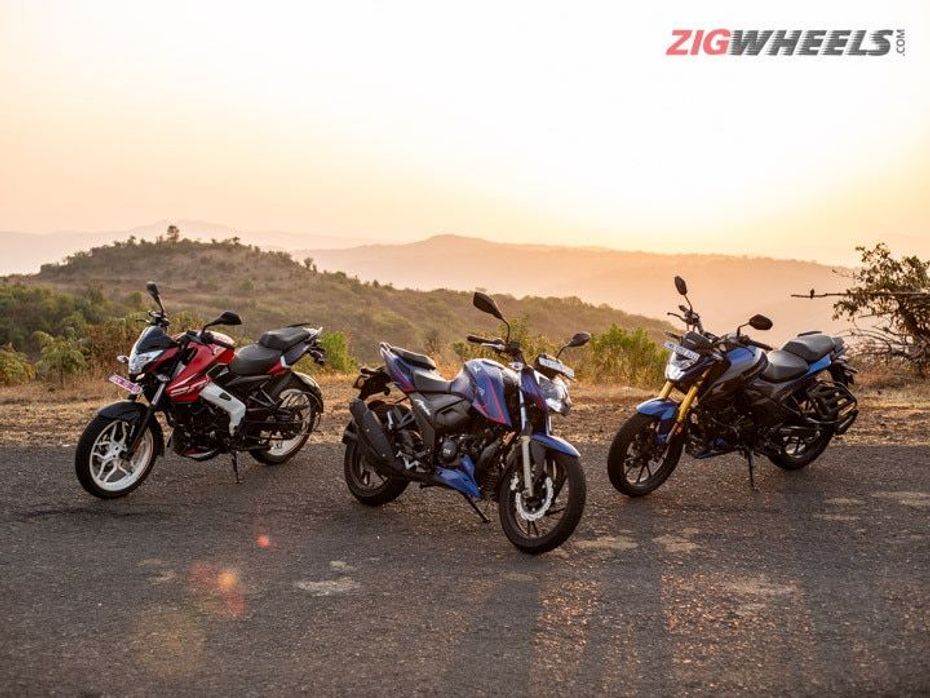
From flickering AC setups to halogen projectors to LEDs, two-wheeler lighting solutions have come a long way in improving night-time visibility. While LEDs have gained prominence, they cost quite a bit more than their halogen counterparts. And in this comparison, we have three 200cc bikes that hope to give us an answer to whether the LED march is warranted.
Here’s our headlight comparison of the TVS Apache RTR 200 4V, Honda Hornet 2.0, and the Bajaj Pulsar NS200:
What are we measuring?
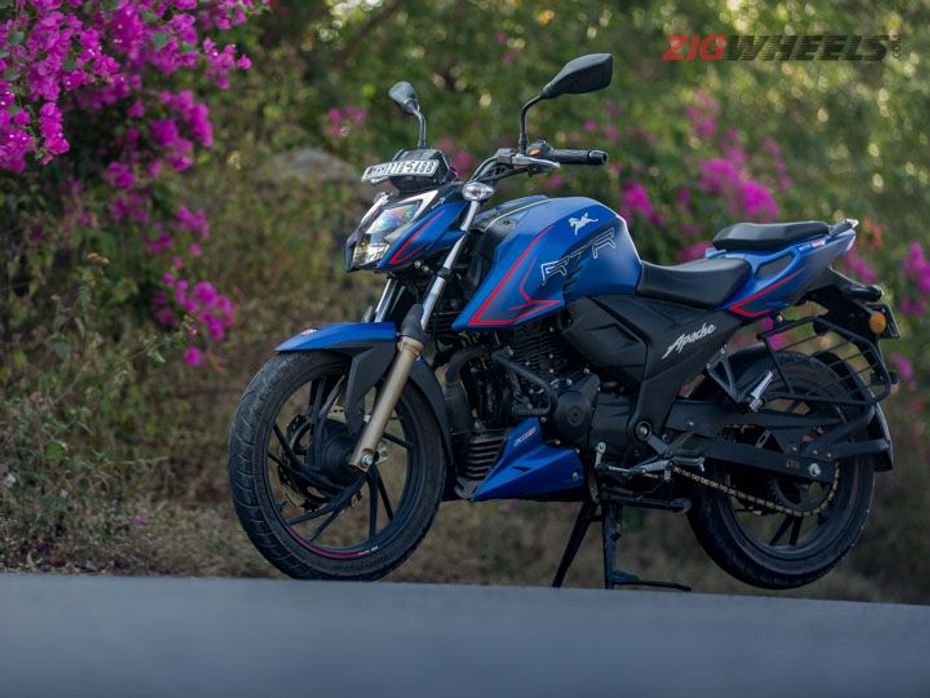
Using a lux meter, we measure illuminance. In simpler terms, we are measuring the light intensity at different points. To mark these points, we’ve used a few interesting props. The Lux readings translate as such - higher lux numbers simply mean you would be able to spot the said object better. But just how much is enough? Here are some examples to set expectations:
|
Condition |
Illumination (lux) |
|
Sunlight |
107527 |
|
Full Daylight |
10752 |
|
Full Moon |
0.108 |
Where are we testing the headlamps?
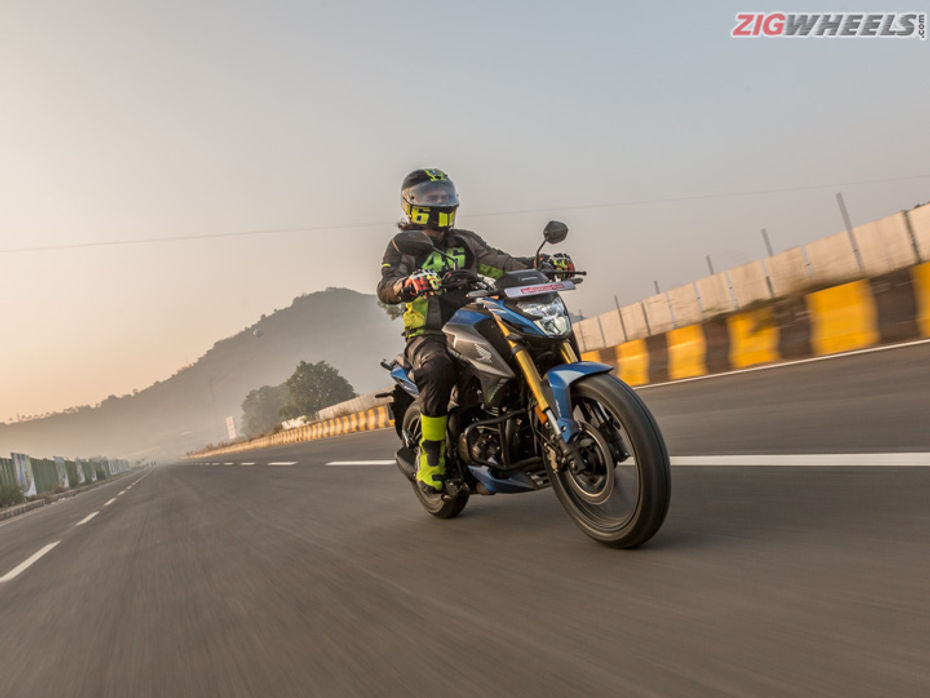
We conducted the test in a dark room with a test area measuring 18 metres in length.
Readings are obtained on a lux meter mounted on a tripod at a height of 21 inches.
A typical Indian road was recreated with objects placed at 5-metre intervals.
Bike is placed in the exact centre of its own lane.
The wall on the far side has markings on the vertical axis at every foot.
The Contenders
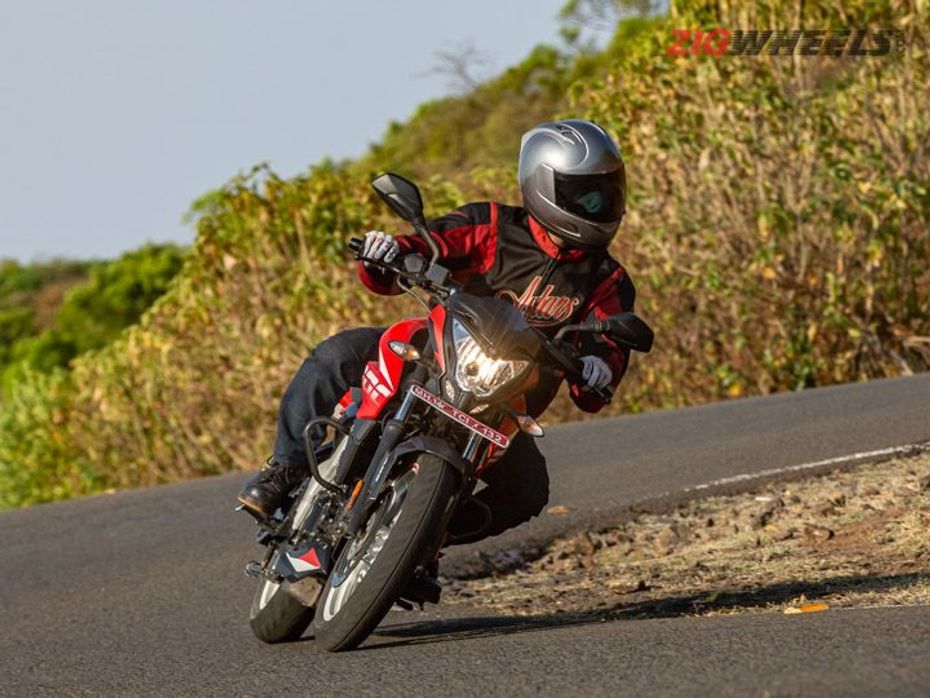
the automobile community
|
Motorcycle |
DRL |
Headlight |
|
TVS Apache RTR 200 4V |
LED integrated |
LED |
|
Honda Hornet 2.0 |
LED integrated |
LED |
|
Bajaj Pulsar NS200 |
LED |
Halogen bulb |
Which has the best low beam?
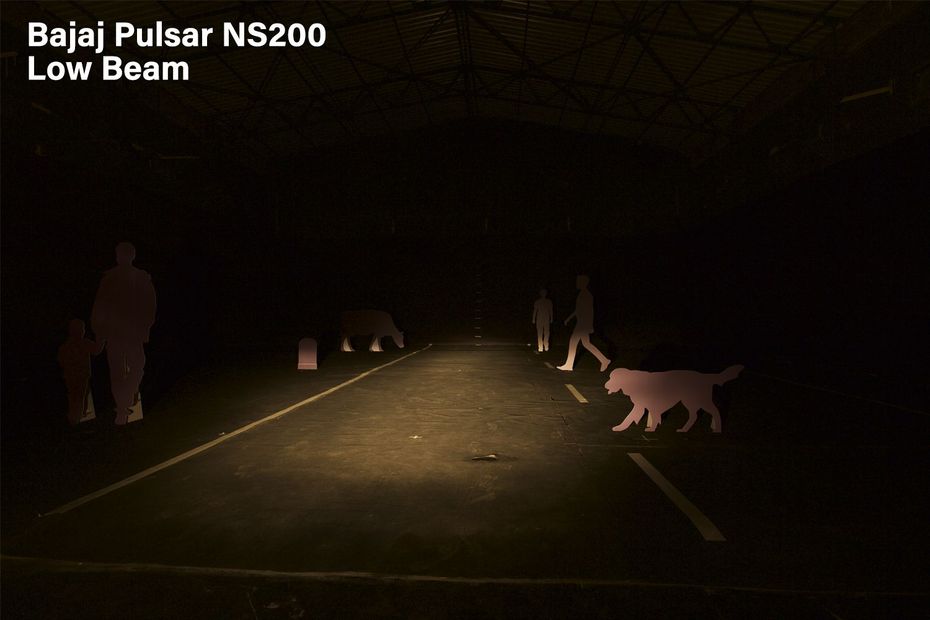
The Pulsar’s rudimentary halogen setup has the better spread of the lot, but the intensity is quite weak. As a result, you will not be able to spot/identify blurry objects in your periphery.
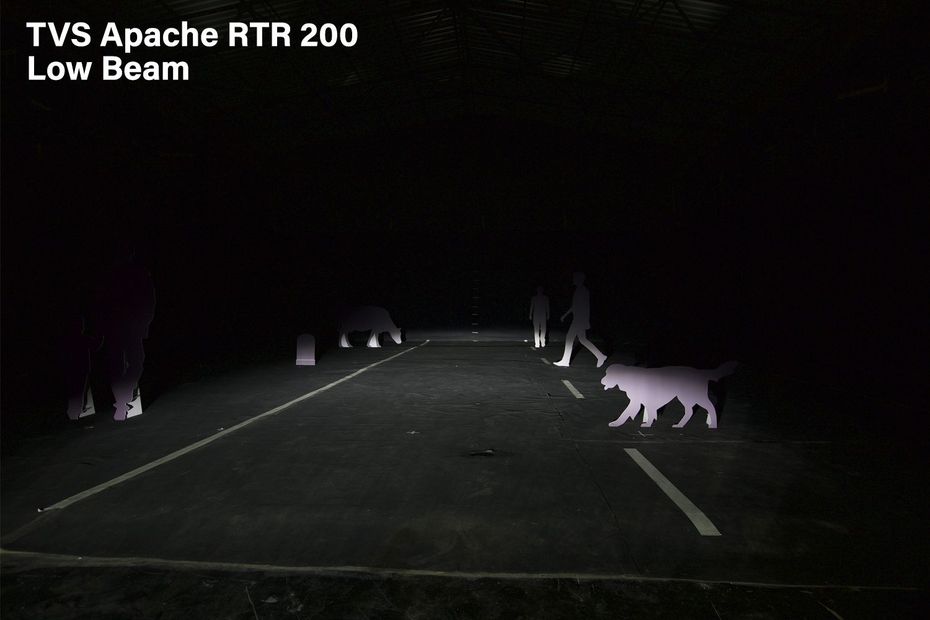
The Apache has a solid low beam that lights up the road ahead quite well. In terms of spread, though, there is very little dispersion. Hence, noticing road hazards in dimly-lit situations becomes a challenge.
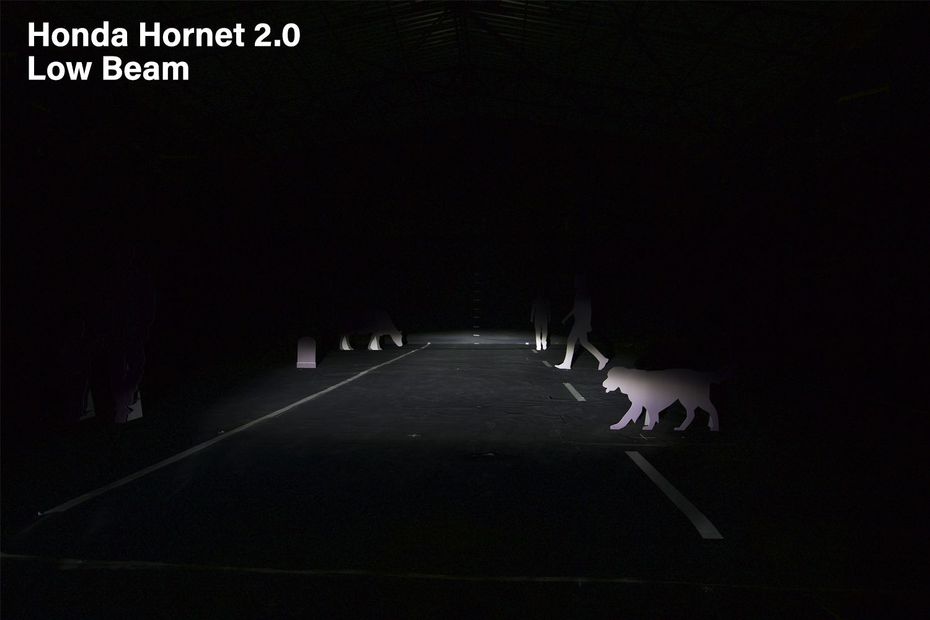
Much like the Apache, the Hornet has a bright centre beam with little to no spread. The Honda’s beam, however, isn’t focused far enough ahead, which detracts you from having a good night ride.
Which has the best high beam?

The near-sighted Hornet beam is bright and concentrated in the centre. It fares poorly in terms of spread.
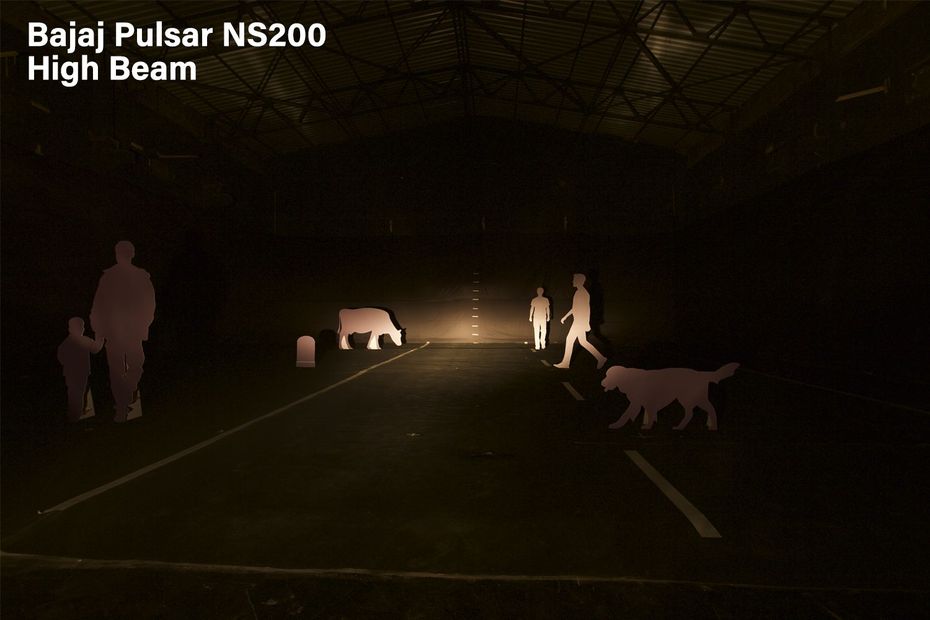
There are still benefits of the Pulsar’s halogen setup as it has the best spread when it comes to the high beam. It cannot match the intensity of the LEDs in the centre of the lane. But the difference between itself and the Hornet, which is the poorer of the two LED high beams, is quite marginal.

The Apache is brilliant in this area. Great focus, high intensity, and good spread, all key ingredients that make it a winner.
Overall
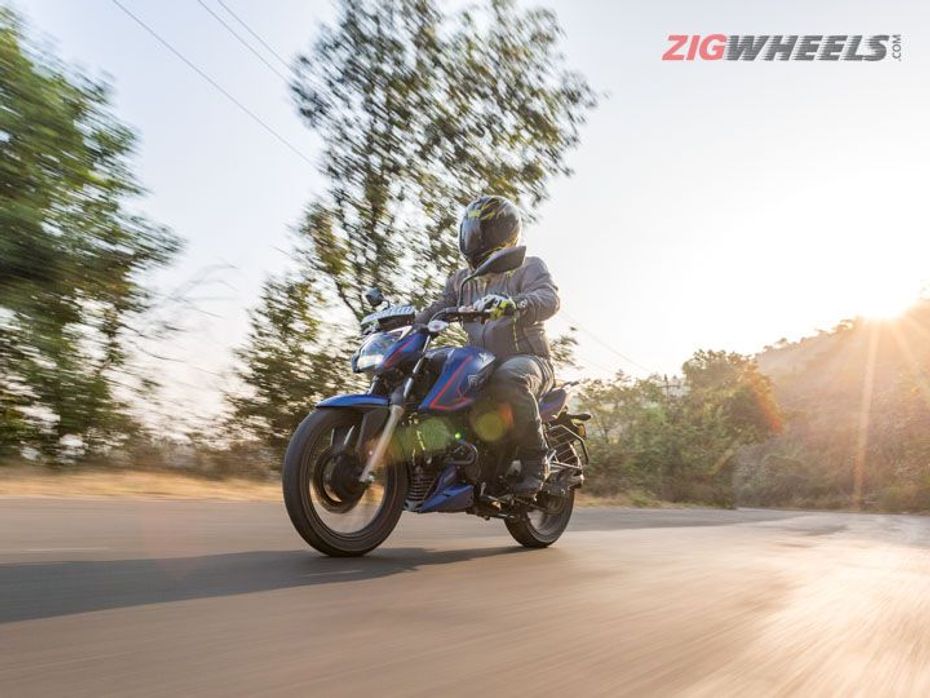
The Apache takes the honours here. In both tests, it scores handsomely. And of them all, it is the one that gives you the most confidence to ride in low-light situations. The Hornet comes in second, but only slightly ahead of the Pulsar. We only wish Honda adjusts its beam to focus a bit further up the road. And lastly, it is high time Bajaj updated the unit of the Pulsar to LEDs, providing that much-needed modernity to the package.
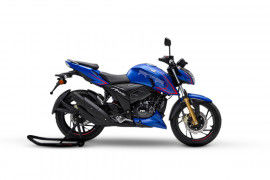

ZigOpinion: Why Flex Fuel Is The Next Step In The Future

Here Are Top 5 Fastest Bikes In India Under Rs 2 Lakh

Selection Round Of TVS Young Media Racer Program 2024, Ft. Modified...

TVS Shares New Teaser: Updated Apache RTR 200 4V Incoming?

TVS MotoSoul 3.0: Dates Announced

Here’s What The 2023 MotoSoul Festival Will Pack!

TVS Eurogrip Rides New Touring And Off-Road Tyres Into Europe

TVS Young Media Racing Championship 2022 Round 3: How Deep Is Your...
 Bajaj Pulsar NS200
Bajaj Pulsar NS200
 TVS Apache RTR 180
TVS Apache RTR 180
 TVS Apache RTR 160 4V
TVS Apache RTR 160 4V
 Bajaj Pulsar N250
Bajaj Pulsar N250
 TVS Ronin
TVS Ronin
India's largest automotive community
 TVS Apache RTR 160
Rs. 1.20 Lakh
TVS Apache RTR 160
Rs. 1.20 Lakh
 TVS Raider
Rs. 85,010
TVS Raider
Rs. 85,010
 TVS Ronin
Rs. 1.35 Lakh
TVS Ronin
Rs. 1.35 Lakh
 TVS Apache RTR 160 4V
Rs. 1.24 Lakh
TVS Apache RTR 160 4V
Rs. 1.24 Lakh
 TVS Apache RTR 310
Rs. 2.49 Lakh
TVS Apache RTR 310
Rs. 2.49 Lakh
 TVS NTORQ 125
Rs. 86,841
TVS NTORQ 125
Rs. 86,841
 TVS Jupiter
Rs. 74,691
TVS Jupiter
Rs. 74,691
 TVS Jupiter 125
Rs. 79,299
TVS Jupiter 125
Rs. 79,299
 TVS iQube
Rs. 1.07 Lakh
TVS iQube
Rs. 1.07 Lakh
 TVS XL100
Rs. 44,999
TVS XL100
Rs. 44,999